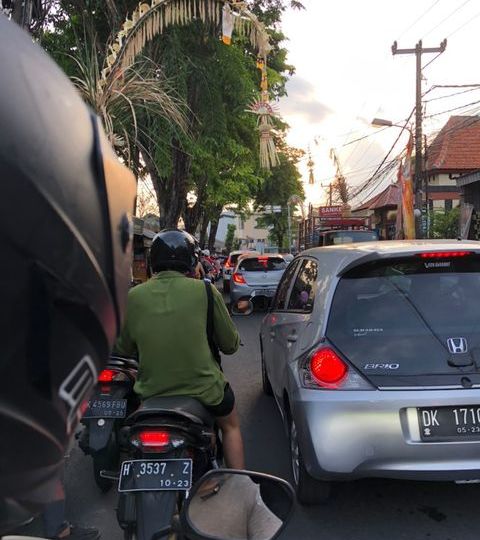For better or worse, the Indonesian tourism hotspot is gradually returning to its pre-pandemic heyday since it reopened to tourists a few months ago. Yes, we’re seeing more and more international flights entering Bali. And, yes, the lifting of mandatory COVID-19 testing upon arrival and the reintroduction of visas on arrival (VOA) certainly contributed to the increasing number of travelers flocking to the tropical island.
As someone who moved to Bali in December 2020, i.e. several months into the pandemic, I can’t help but notice the recent changes on the island.
My friend and I were at the McDonald’s on Sunset Road the other night after gyrating in a club (don’t judge) when we saw a couple of young Australian dudes ordering “Macca’s” wearing only shorts and with beer bottles in their hands.
“Yep, Bali is back to normal,” I said as I turned to my friend.
If that isn’t a telling enough sign for you, I have compiled this list of five observations that point towards a rejuvenated Bali. In no particular order:
1. Beaches are full again
Remember those pictures depicting barren beaches on the Island of Gods throughout the pandemic?
In many beaches, like in Seminyak, those colorful beach bean bags are fully occupied again. Whether people are just enjoying some down time reading a book alone during the day or enjoying shisha and beers by the beach after the sun sets, gone are the empty beaches and back are the sun-seekers.
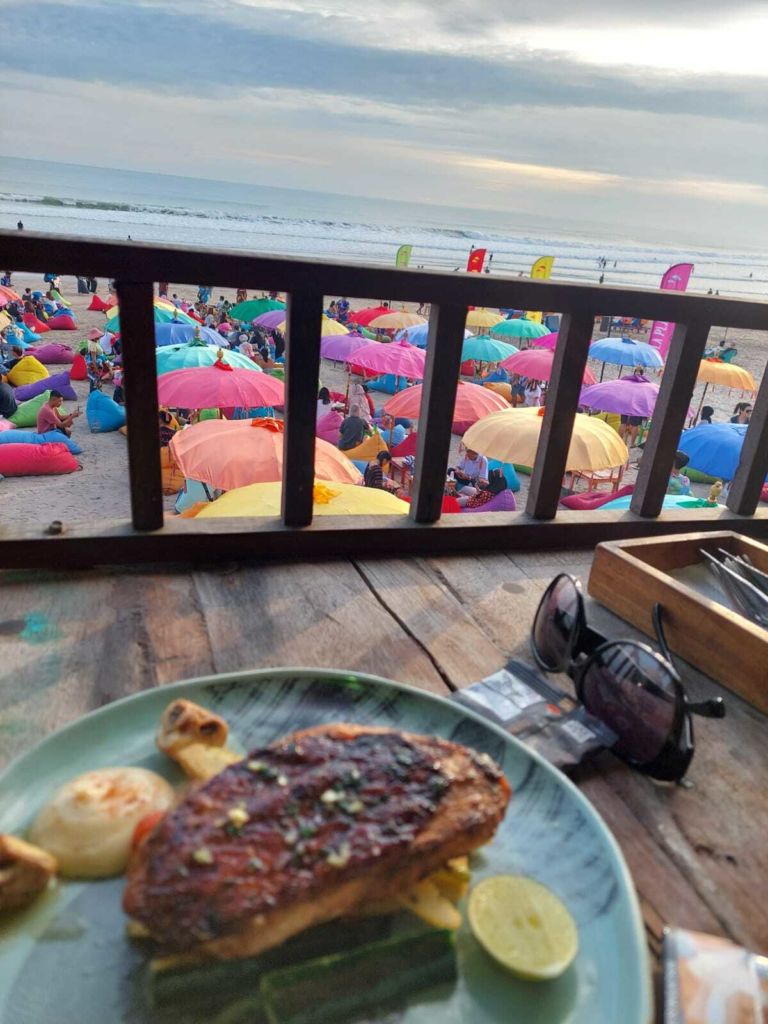
2. Nightclubs are jumping
Mixwell, a famous bar in Seminyak that regularly features drag queen shows, was quiet during the pandemic, forcing them to shut down temporarily on a couple of occasions.
Now? The place is almost always filled every day and, since the drag queens (most of whom are trans women) were among those hit the hardest during the pandemic, it’s nice to see that many can now perform their hearts out to a full-house audience and take home those tips.
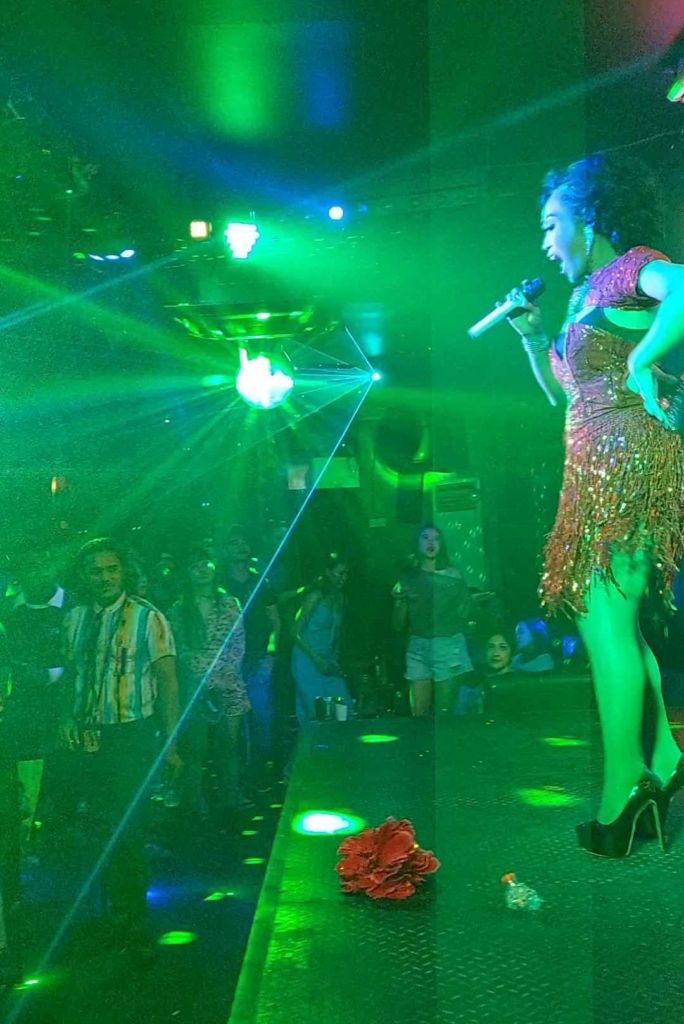
3. Traffic jams
It’s a cliché, but, like any other cliché, it’s born out of truth. If you’ve been in Bali since March 2020, you’ve surely gone through the surreal experience of traveling down empty roads in what used to be crowded spaces such as Kuta, Legian, and Seminyak.
It’s fair to say that Bali traffic jams are “back to normal” now, among them the infamously crowded intersection near Kuta Beach on the way to the Beachwalk Shopping Mall. Just like the old days.
PJ, who runs the Instagram account @canggu.info, yesterday took a picture of the traffic jam on Canggu Main Road, signifying the crowded Bali that many have yearned for.
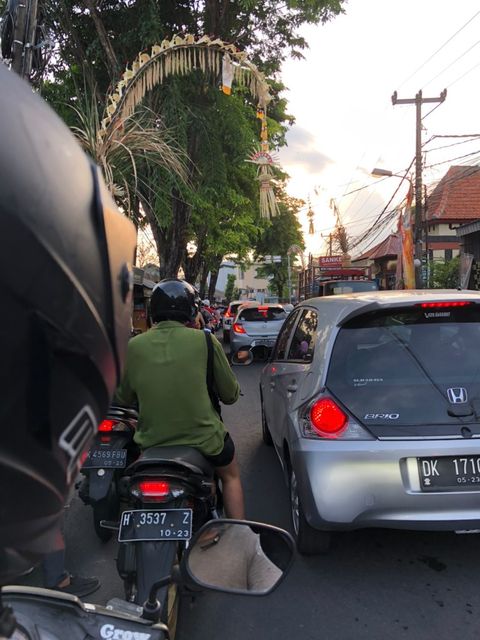
Stuart McDonald, a 51-year-old Australian writer and co-founder of TravelFish.org who has been living in Bali for 14 years, noticed that the change in the southern part of Bali “feels like [it] has already returned to close to 2019 levels.”
“Feels strange considering Bali’s inbound tourism from China, which represented around 50 percent of the entire inbound tourism trade, is yet to come back on stream. What happens when the China tap is turned on again? What is the government’s plan to avoid complete gridlock?” he said.
4. No to rideshares
It’s common knowledge that conventional motorcycle taxi drivers (ojek pangkalan) and their app-based counterparts often clash over customers (well, that would be an understatement – there has been physical violence involved in the past like in this instance in Jakarta). People often go for online ojek due to its reasonable prices as well as other facilities that are provided by ride-hailing apps.
Signs put up by conventional ojek drivers prohibiting rideshare drivers from entering their territory were commonplace before the pandemic. During the pandemic, as the collective struggle was so great that such conflicts were set aside, those signs had all but disappeared. Now as the economy is waking up, it seems like those signs are making a return.
Kinanti Yoddy, 40, who has been living in Bali for two years and visited the island twice a year for vacation prior, noticed one sign hoisted in Canggu, which she shared to a local Facebook community.
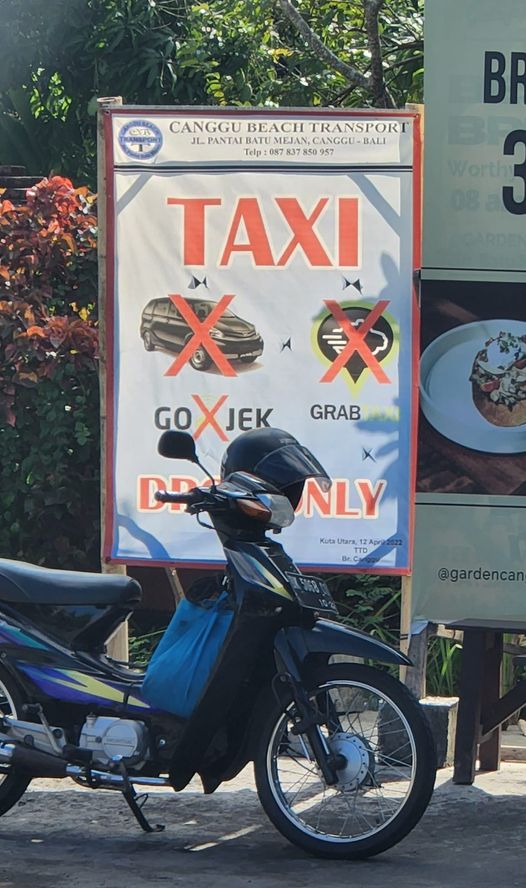
The sign basically said that online taxis can only drop their passengers but not pick up any customers in the area.
“This is starting again. A group of offline taxi drivers giving Bali a bad name,” Kinanti wrote in the Facebook post, which Coconuts Bali obtained with her permission.
In some places like Savaya Bali, a famous night club in Uluwatu, guests are not allowed to order online taxis to the premises – with many of them deciding to walk a little further so they can be picked up by the transport mode of their choice.
5. Soaring rent
Many hotels, guest houses and villas in Bali cut down their prices significantly for long-term stays during the height of the pandemic (locals know this as “COVID prices”), as they were figuratively begging for scraps just to stay afloat.
Now that Bali is reopening, some landlords have hiked rent quite significantly. While they are entitled to maximize their earnings from the masses of new visitors, old tenants are left short-changed especially when the hike comes with little notice for them to find alternative living arrangements.
Sergio, 30, who lives in Bandung but has mostly stayed and worked remotely in Bali throughout the pandemic, is one such tenant. Having stayed at a guest house since November 2021 for IDR2.7 million (US$185) per month, he was told that the price would be increased to IDR3.7 million (US$255) on June 19.
“[But] the [guest house] owner told me last night that I can’t extend [after June 19] anymore because the place is now fully booked,” he told Coconuts Bali.
Sergio noticed that several rooms there were actually empty, so he jokingly asked the owner whether he was telling the truth or not.
“And then he replied: the price will be IDR5.5 million (US$378) a month if I want to extend,” he recalled with a laugh. “I mean, I know eventually the rental prices will increase. But I’d appreciate it if they can just be frank with me. Just say as it is: things are going back to normal and we need to increase the price – which is very reasonable.”
Some landlords have been more reasonable. Another work-from-Bali gal, Livia, 35, said that her rent increase was “still acceptable” and decided to prolong her stay at her guest house.
“The increase is by around IDR1 million (US$68) – so I decided to stay,” she said, adding that she is aware that other places have increased their prices unreasonably.
So there you have it. The good and the bad. For what it’s worth, the island’s tourism industry – its bread and butter – has been battered for so long that, in a lot of ways, returning to normal is pretty much preferred by many.
Do you agree with our list? Are we forgetting anything? Let us know in the comments.
